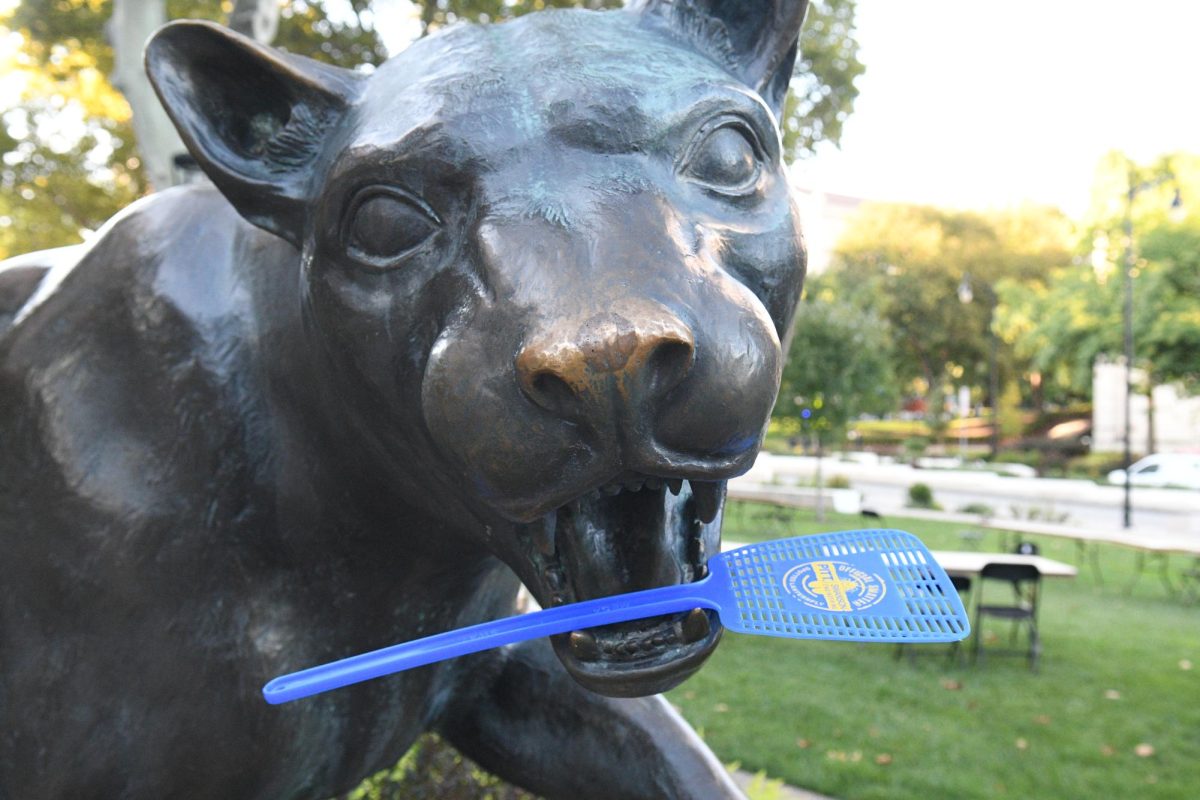Kyla Warren, a junior neuroscience major, has never seen a lanternfly in her home state of Illinois but feels they are a nuisance in Pittsburgh.
“It’s more annoying than mosquitoes,” Warren said. “[Lanternflies] just keep flying at you out of nowhere.”
Since the spotted lanternfly appeared in Allegheny County in 2021, the insects have killed native plant species like sugar maples and grapes. But this year, Pitt biology professor David Outomuro said he feels lanternflies are less prevalent on campus.
“[Lanternflies] tend to breed too much and go above the amount of resources available, then the new generation kind of crashes,” Outomuro said. “They most likely bred way too much in the second year, the third year, we saw that huge peak in 2023 and this year we’re seeing that slow decrease from that peak.”
Outomuro explained that lanternflies used the “tree of heaven” plant as a host, a species of which Pittsburgh has a “significant amount.” However, Outomuro said the apparent decline in lanternflies may have been caused by lanternfly overconsumption.
“It seems that they have been recorded eating plants of 70 different species in the U.S., but the preferred host is the Tree of Heaven,” Outomuro said. “Something people have seen is that after huge peaks in population like the one in Pittsburgh, they have killed some of those trees so they might be running out of their preferred host as well, because they overexploited it too much.”
Mahika Arvind, a junior psychology major, feels that she sees the most lanternflies in places that provide some sort of cover, such as the awning of Dunkin Donuts on Center Avenue or parking garages around campus.
Outomuro said he thinks that lanternflies gather near structures that look like trees, such as traffic lights.
“I was thinking maybe they are attracted to those structures because it’s whatever is vertical that resembles an actual tree,” Outomuro said. “I don’t understand why they enjoy being on cement surfaces.”
Lanternflies are harmful to native plants because they consume the sap from inside of trees. Outomuro explained that lanternflies produce a lot of sugary, watery waste, which can lead to a buildup of bacteria and fungi. The lanternflies go from tree to tree and suck the sap and water supply out of the tree. As a result, the excess waste piles up at the bottom of the tree, creating a good environment for fungi and bacteria, according to Outomuro.
Outomuro said the lanternfly’s colors are meant to signal to predators that the lanternfly won’t taste good, in addition to accumulating chemicals found in Tree of Heaven. The shape of the lanternfly helps them blend into the landscape. There are also some chemicals from Tree of Heaven found in lanternflies that many predators will not like.
Andrew Lindros, a sophomore law, criminal justice and society major, said he still sees many lanternflies when he’s on campus.
“I think they’ve become more adaptive,” Lindros said. “At first I could kill them by stepping on them once. They’re everywhere, on the ground at all times.”
Outomuro thinks it’s difficult to assess if lanternflies have gotten smarter in the last few years. He thinks that lanternflies rely on camouflage and sensing when objects are nearby to avoid being squashed.
“It’s hard to tell in just three years,” Outomuro said. “I don’t know if natural selection would have happened so fast. We don’t know how much of that behavior actually passes from generation to generation.”


